-
 Melody
Hi there! Welcome to my shop. Let me know if you have any questions.
Melody
Hi there! Welcome to my shop. Let me know if you have any questions.
Your message has exceeded the limit.

What is a Seamless Steel Pipe?
2025-10-11 16:15:55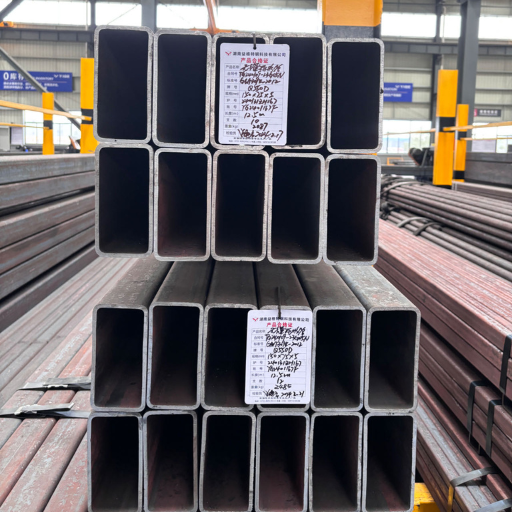
Seamless steel pipes, also known as extruded pipes, are indispensable in numerous sectors such as construction and engineering, energy, and transportation. Their durability, strength, and versatility make them the number one choice for severe conditions and very demanding applications. But what are the features that are unique to seamless steel pipes and differentiate them from other pipe types? This paper will examine the distinctive manufacturing process of seamless steel pipes, their significant advantages, and the reasons for their global acceptance in various industries. Are you a professional or just an interested person in industrial innovations? This guide will be quite informative to you as well, by taking you into the fascinating world of seamless steel pipes.
Definition and Characteristics of Seamless Steel Pipes
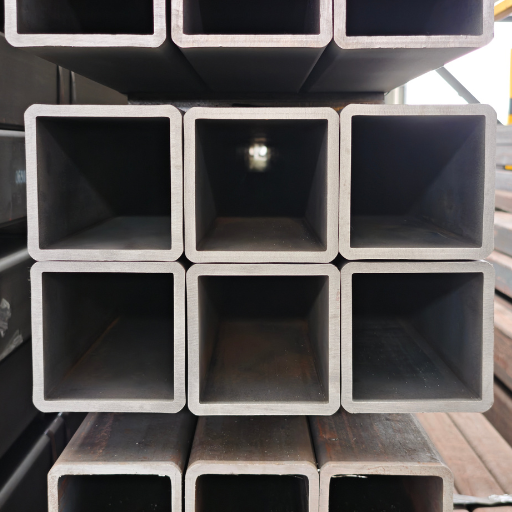
Seamless steel pipes are pipes that are made up of a single piece of material without any joints or seams. They have a uniform and continuous structure because they are not produced regularly. The building block of a seamless pipe is a solid steel billet, which is then heated and pierced to form a hollow tube, a process called extrusion. This method of production makes it possible to end the use of welding altogether; thus, the finished product is a seamless pipe that is even stronger and more resistant to pressure and mechanical stress. The pipes have smooth interior surfaces that allow them to have optimum flow efficiency, and the uniformity then lowers the risk of corrosion or pipe failure in extreme conditions. All these fantastic features make the seamless steel pipes the best choice for use in the Oil and Gas, Energy and Construction industries.
What is a Seamless Steel Pipe?
A seamless steel pipe is a hollow, round product of high strength, made by extruding solid steel billets at high temperatures without any welding. This process guarantees exceptional durability, resistance to pressure, and suitability for use in critical industrial applications.
Key Characteristics of Seamless Steel Pipes
High Strength and Durability
The tensile strength and durability of seamless steel pipes are remarkable. Their single-piece construction makes them highly resistant to stresses and mechanical forces that normally would cause damage. They are usually found to have a tensile strength ranging from 400 to 600 MPa, this range is material grade dependent.
Superior Pressure Resistance
Seamless pipes are free of the weakest point, the welded seams, so their ability to withstand internal pressure has considerably improved. This, in turn, makes seamless pipes the favorite in high-pressure applications. Their capabilities often exceed 20 MPa in the oil and gas transportation industry, among others.
Enhanced Corrosion Resistance
The specific alloy composition (for example, stainless steel or other corrosion-resistant materials) determines the corrosion resistance of these pipes, which can be very considerable. The pipes can be made to last longer because they will not rust or oxidize and will not react chemically when they are continually exposed to harsh environments.
Dimensional Accuracy
Pipes without seams are manufactured with highly accurate tolerances in both wall thickness and diameter, ensuring performance consistency. They frequently conform to strict standards like ASTM or ASME, with permitted tolerances as small as ±0.5% of nominal dimensions.
Wide Operating Temperature Range
These pipes can operate under very low or very high temperatures, depending on the material grade, of course. The temperature range can be from -150°F and below to more than 1,000°F. Their ability to adjust to such conditions is a prime factor in their usage in the power generation and petrochemical processing sectors.
Manufacturing Process of Seamless Steel Pipes
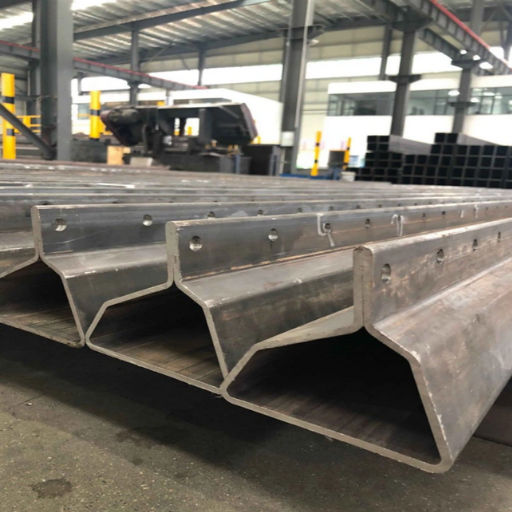
Seamless steel pipe production involves several precise processes to guarantee the pipes' high quality and performance. The following points summarize the production stages:
Raw Material Selection
First of all, steel billets or ingots of the highest quality are selected, typically made of carbon steel, alloy steel, or stainless steel. The manufacturing process includes continuous checking of the composition to ensure it fulfills the required specifications, such as high tensile strength, permissible chemical composition, and good malleability.
Heating and Piercing
The steel billets are put into a rotary hearth furnace and heated up to a temperature of around 2,200°F to 2,500°F. After reaching the right temperature, the billets are taken to the piercing mill where a mandrel is used to create a hollow part by pulling the billet into a seamless tube. This operation is essential as it yields a uniform pipe shape and strengthens the pipe internally.
Elongation and Sizing
The pipe is elongated in a rolling mill after the piercing stage, where it is factored to get the wanted wall thickness and the right diameter. This operation is performed with utmost precision, often using automated systems to ensure dimensional accuracy. Tolerances that are typically reached at this point are ±1% or better.
Heat Treatment
To achieve the desired mechanical properties, the pipes must undergo heat treatment processes such as annealing, normalizing, or quenching and tempering. Ductility, hardness, and resistance to stress and corrosion are some of the properties improved by these treatments while still conforming to industry standards like ASTM A106 or API 5L.
Finishing and Inspection
The last step involves cutting the pipes to the specified lengths, descaling to remove surface imperfections, and conducting extensive non-destructive testing (NDT) methods such as ultrasonic or hydrostatic tests. Dimensional checks and visual inspections are implemented to ensure the final product is free of defects, thereby assuring the product's reliability in critical applications.
The whole production process takes into account the importance of every step, which makes it possible to manufacture seamless pipes with the strength, efficiency, and durability required for demanding environments, thus eluding industrial requirements and putting quality in the center of the process.
Pipe Manufacturing Techniques
Pipe manufacturing involves a variety of techniques tailored to different industries, with seamless, welded, and cast pipe production as the primary methods of pipe-making. Depending on the specific application, other methods will be chosen based on the required strength, durability, and cost-effectiveness.
Seamless Pipe Manufacturing
To make seamless pipes, a solid steel billet is pierced, creating a hollow cylinder that is subsequently elongated and formed to the presently dictated size. This procedure eliminates the need for a welded seam, resulting in superior safety and pressure resistance. Hot extrusion and rotary piercing are commonly applied methods in the seamless pipe industry. According to the latest figures from the industry, the worldwide demand for seamless pipes will likely be $86.6 billion by the year 2028, with uses in oil and gas extraction, power production, and heavy machinery.
Welded Pipe Manufacturing
Welded pipes are made by bending flat steel sheets or plates into a tube and then welding along the joint. The modern methods of electric resistance welding (ERW) and high-frequency induction welding (HFIW) allow for the production of pipes having a very strong seam. The welded pipes can be made to meet any need and are much preferred in applications such as water and low to medium pressure, where they are used in transportation, infrastructure, and structural components. The cutting-edge welding technology still allows for production speed improvements, with a current ERW machine that can produce over 100 meters per minute of pipe.
Cast Pipe Manufacturing
The manufacturing of pipes by casting involves pouring hot metal into molds to create pipes with intricate shapes. This process is mainly restricted to the aforementioned specialized uses as in the case of draining systems and industrial heavy-duty pipelines. Cast-iron pipes, known for their strength, play a significant role in the municipal water supply infrastructure worldwide and thus are a major part of the global market. The reports of the market indicate that ductile iron, which is the advanced version of cast-iron designs, are becoming more and more accepted as they are flexible, corrosion-resistant, and have a better strength-to-weight ratio.
Advances in Pipe Manufacturing
The pipe manufacturing process is being constantly improved through research and development, particularly in terms of automation and quality control. For example, installing fully automated ultrasound testing systems will enable the instant identification of any problems in the production process, thereby reducing the occurrence of defects in the final products. Moreover, being at the forefront of the fourth industrial revolution—technologies such as preventive maintenance systems and digital twins—has transformed the accuracy and efficiency of manufacturing processes.
Pipe manufacturing still plays an essential role in the industries, as it provides support to such vital sectors as energy, construction, and water management. The use of advanced technologies, along with the din of global demand, continues to drive the field, which is all but certain to reach higher levels of reliability and performance.
Factors Influencing Diameter and Wall Thickness
The diameter and wall thickness are among the dimensional specifications of pipes that vary according to many influencing factors which are necessary for maintaining structural integrity, improving operational efficiency, and meeting industry standards. Below are five vital factors that have a great impact on these dimensions:
Operating Pressure
Pipes must be able to endure specified internal and external pressures, which depend on their function. Thicker walls are required when the operating pressure is higher to prevent deformation or rupture. For instance, a pipe that is meant to bear pressures of more than 1,000 psi may need a wall thickness that is greater than the minimum standard set by ASME B31.3.
Material Selection
The dimensions required are determined by the material properties such as tensile strength, ductility, and corrosion resistance. For example, high-performance alloys in chemical industries enable the use of thinner-walled designs because they have greater strength than standard steel, making thickening unnecessary.
Operating Temperature
High temperatures result in material weakening that leads to a decrease in the load-bearing capacity. To prevent thermal stress, pipes operating at temperatures over 750°F usually require thicker walls, as specified by ASTM standards. This adjustment is done to compensate for thermal expansion and material softening.
Application Environment
The environmental conditions, such as exposure to corrosive chemicals or abrasive substances, determine the minimum thickness required for a pipe to last a long time. For example, in offshore installations, the wall thickness must be sufficient to counteract mechanical wear from fluid flow and corrosion due to interaction with seawater.
Applicable Standards and Codes
Standards like ISO 15590 for pipelines and API 5L for line pipes set very rigorous specifications regarding acceptable diameter-to-thickness ratios. Compliance guarantees safety as well as a consistent performance range. To illustrate, pipelines carrying hazardous materials must follow even stricter dimensional tolerances than those for normal pipelines.
By gaining insights into such factors, one can improve pipe design while considering cost-efficiency, safety, and durability.
Advantages of Seamless Steel Pipes
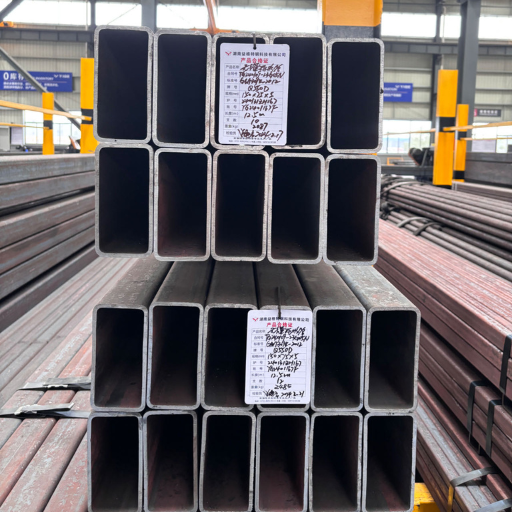
Superior Strength and Durability
Seamless steel pipes are produced without a welded seam, thus removing the main structural weakness that exists in welded pipes. The seamless construction allows for higher pressure, temperature, and mechanical stress to be supported, further making them the best choice for demanding applications such as oil and gas transportation or high-pressure steam systems.
Enhanced Corrosion Resistance
Seamless pipes are more corrosion and oxidation-resistant than welded pipes. They have larger wall thickness and no welds. Hence, they can be used in environments exposed to chemicals, moisture, or extreme temperatures, thus ensuring a longer service life and reduced maintenance costs.
Precise Dimensional Tolerances
The seamless steel pipes manufacturing process allows them to have tighter dimensional tolerances and consistent wall thickness, while welded pipes have the opposite. For example, industry standards specify permissible wall thickness variations only by ±12.5%, allowing for very accurate and trustworthy solutions for high-precision applications such as the automotive or aerospace industries.
Wide Range of Applications
Seamless pipes are not limited and can be used for a variety of purposes across different industries like oil, gas, power, and construction. Their ability to resist corrosion and endure pressure makes them vital for critical installations, such as boilers, heat exchangers, and pressure vessels.
Improved Flow Characteristics
The seamless pipes' internal surface is so smooth that it causes very little turbulence and resistance to flow, thus making it easier for fluids and gases to get transported. As an example, this feature leads to energy savings in systems like pipeline networks, where the reduction of drag translates to little pressure drop over long distances.
These numerous benefits make seamless steel pipes the most suitable option for critical installations, where performance, reliability, and adherence to strict industrial regulations are key factors.
Benefits of Seamless Steel Over Welded Pipe
Key Point | Seamless Steel Pipe | Welded Pipe |
|---|---|---|
Strength | Higher due to no weld seams | Lower due to potential seam weaknesses |
Durability | Superior structural integrity | Weaker at welded joints |
Pressure Resistance | Handles higher pressures | Limited by seam strength |
Corrosion Resistance | Better, no seam to corrode | Prone to corrosion at welds |
Temperature Resistance | Performs well under high temperatures | Less suitable for extreme heat |
Interior Surface | Smoother, reduces friction | Rougher, may trap debris |
Reliability | No welding defects | Potential for weld-related flaws |
Applications | Ideal for critical, high-stress uses | Suitable for general applications |
Tolerance and Strength of Seamless Steel Pipes
Seamless steel pipes are well-known for their great strength and narrow tolerances, which are the reasons for their use in high-precision and high-stress environments. The welded seam is a significant advantage as it helps maintain uniformity, thereby providing the pipes with more reliability and strength under challenging conditions. The tolerances and strengths are elaborated upon below:
Dimensional Tolerance
One advantage of seamless steel pipes is that they have very accurate dimensions due to their manufacturing process. For example, the tolerance of the outer diameter (OD) of small diameter pipes (50mm) is ±1%. In the same vein, the wall thickness tolerances are stringent, usually ±10% of the nominal thickness, with variations in applications depending on the specific tolerances.
Tensile Strength
The typical tensile strength of seamless steel pipes is greater than that of welded ones. The range of tensile strength depends on the grade of the material and can go from 400 MPa to 900 MPa for standard pipes. Tubes made from high-strength alloys like those used in oil and gas pipelines can have tensile strength up to 1000 MPa or more, thus performing largely even in extreme conditions.
Pressure Tolerance
The seams that are usually the weakest points of welded pipes are entirely removed in the case of seamless pipes. Therefore, seamless pipes can be used to create structures that are even stronger under pressure demand and hence are widely applied in areas such as hydraulic systems, boilers, and pressure vessels, where the application is quite critical.
Impact Strength
Seamless pipes have a very strong impact resistance, which allows them to withstand dynamic loading conditions without the risk of failure. Their regular microstructure, along with the absence of welding inconsistencies, provides this valuable property, making them suitable for applications involving vibration, thermal cycles, or sudden impacts, such as offshore drilling risers and subsea pipelines.
Fatigue Resistance
The uniformity of seamless pipes significantly enhances their fatigue resistance, allowing them to withstand repeated stress cycles without breaking. This is an essential feature in industries such as aerospace, automotive, and power generation where cyclic loading is common.
Such properties make seamless steel pipes the best choice for sectors that require strict and trustworthy materials. Usually, engineers consider pipe grade, application requirements, and operating conditions when selecting seamless pipes to ensure longevity and efficiency.
Typical Applications of Seamless Steel Pipes
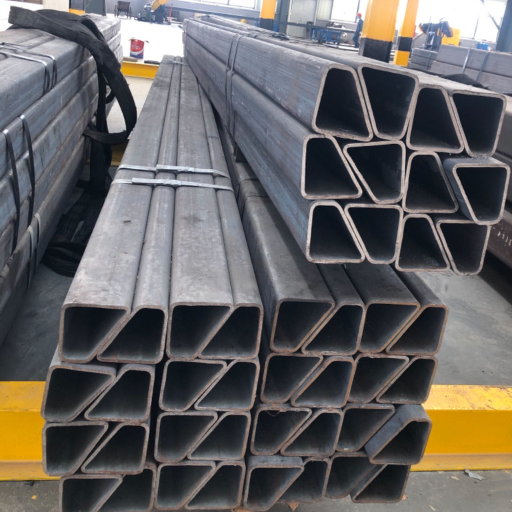
Seamless steel pipes have become the preferred choice in numerous applications for their unmatched strengths,toughness and resistance to wear. Thus, below are five areas in which their usage is predominant and their contribution to industry is acknowledged:
Oil and Gas Industry
Seamless steel pipes are used extensively in oil and gas production as they are responsible for the drilling, casing and pipelines. Their ability to withstand high pressure, temperature variations, and harsh environments guarantees safety and efficiency in operations. For instance, seamless pipes of Grade X70 that are used in offshore oil fields can withstand over 10 MPa pressure.
Power Generation
Such pipes are used in power generation plants, for example, to conduct steam through heat exchangers and boilers. Usually, carbon steel or alloy steel seamless piping is employed in plants processing superheated steam at very high temperature and pressure. Top grade e.g. ASTM A335 P91 can withstand up to 600°C in continuous operation, so they are used in the new thermal power plants and combined cycle systems.
Automotive Industry
Seamless pipes are also fully utilized in making parts that include drive shafts, axle casings, and even exhaust systems. Their exact shape, low weight, and high strength characteristics are the factors that contribute to vehicle performance and longevity. One example is that seamless tubular components provide 20% less weight compared to welded ones, thus helping to save on fuel.
Aerospace and Aviation
Strong and light materials that can also endure a lot of stress are a must for the aerospace industry. Among the various applications of seamless steel pipes in aerospace are hydraulic systems, instrumentation lines, and aircraft's structural components. Choosing titanium and nickel alloy seamless pipes for critical applications provides excellent resistance to fatigue and extreme operational conditions at high altitudes.
Construction and Infrastructure
Seamless pipes are extensively used in the infrastructure sector for structural applications such as columns, beams, scaffolding, and pipelines in both civil and building works. Their ability to carry heavy loads without deforming or cracking makes them indispensable in constructing large projects, including gigantic skyscrapers and bridges. For example, the seamless structural pipes conforming to EN 10210 standards can handle the high loads required in such applications quite easily.
Overall, these numerous applications strongly evidence that seamless steel pipes are an integral part of productivity, dependability, and quality under harsh conditions in modern industries.
Industries Utilizing Seamless Steel Pipes
1. Oil and Gas Industry
The oil and gas industry is undoubtedly the largest market for seamless steel pipes, which are crucial for operations such as drilling, transporting crude oil and natural gas, and refining. The global seamless steel pipe market size was approximately $64.5 billion in 2022 and is estimated to grow at a CAGR of 5.6% from 2023 to 2030; the main reason for this is the global increase of oil exploration and production. In this industry, seamless pipes are prized for their ability to withstand rigorous environmental conditions, including high pressure, extreme heat, and corrosive substances, thus ensuring the safety and efficiency of operations.
2. Chemical and Petrochemical Industry
In the chemical and petrochemical industries, seamless steel pipes are essential because transporting corrosive liquids, acids, and gases requires materials with high chemical resistance and durability. Pipes are often produced to the ASTM A335 or EN 10216-2 standards in this industry, which means they go through rigorous testing to check their tolerance, strength and temperature resistance. The ability of seamless pipes to maintain their structural integrity under high-pressure conditions and continuous chemical reactions is also why they are so widely used in chemical plants.
3. Construction and Infrastructure
The construction and infrastructure sectors use seamless steel pipes extensively for building and supporting applications and they are also used in pipelines. The tubular sections of high-rise apartments, as well as the digital infrastructure of stadiums and public places, depend on seamless pipes for consistent quality and strength. The demand for seamless pipes is expected to increase due to rising investments in urbanization and infrastructure projects worldwide, particularly in the Asia-Pacific region, which is experiencing a significant upsurge in infrastructure development in countries like China and India.
4. Automotive Industry
Perfectly engineered seamless steel pipes are among the finest choices for applications requiring the most precise tolerances, such as in the automotive industry, where they are used to make components like drive shafts, exhausts, and suspension systems. Moreover, the presence of seamless pipes in the automotive industry extends beyond the vehicle itself and its functionality. The global adoption of electric vehicles (EVs) further underscores the need for high-performance materials, positioning seamless steel piping as a key player in EV manufacturing trends.
5. Power Generation Sector
In the power generation sector, seamless steel pipes are characterized by their use in the utility of both thermal and nuclear power plants and incorporated in equipment like boilers, heat exchangers, and steam turbines, which are the most demanding parts of a plant in terms of thermal and mechanical stress during the power generation process. Seamless tubes manufactured under the ASME SA-213 standards, for instance, are often used in plants where high temperature and pressure conditions are present during operations, and hence are designed for efficient heat transfer and high creep resistance.
6. Aerospace and Defense
Seamless pipes are employed by the aerospace and defense sectors, where aircraft structural parts, hydraulic systems, and weapon platforms are made from them due to their high strength-to-weight ratio and resistance to extreme stress. The advanced manufacturing processes and strict quality control measures help seamless pipes comply with the rigorous requirements essential for safety and performance in the aerospace sector.
Market Insights
The global market for seamless steel pipes is estimated to surpass $105 billion by 2030, driven by increased energy consumption, technological progress in manufacturing, and the growth of vital industries such as oil, gas, and construction. The Asia-Pacific region leads the market with more than 40% of the global demand, where China is both the largest producer and consumer.
The seamless steel pipes stand the test of time as a crucial element of industrial growth, providing operational efficiency and supporting industry transitions. Their ability to endure tough conditions and comply with strict regulations ensures their constant relevance across multiple sectors.
Tags: What is a seamless steel pipe?


